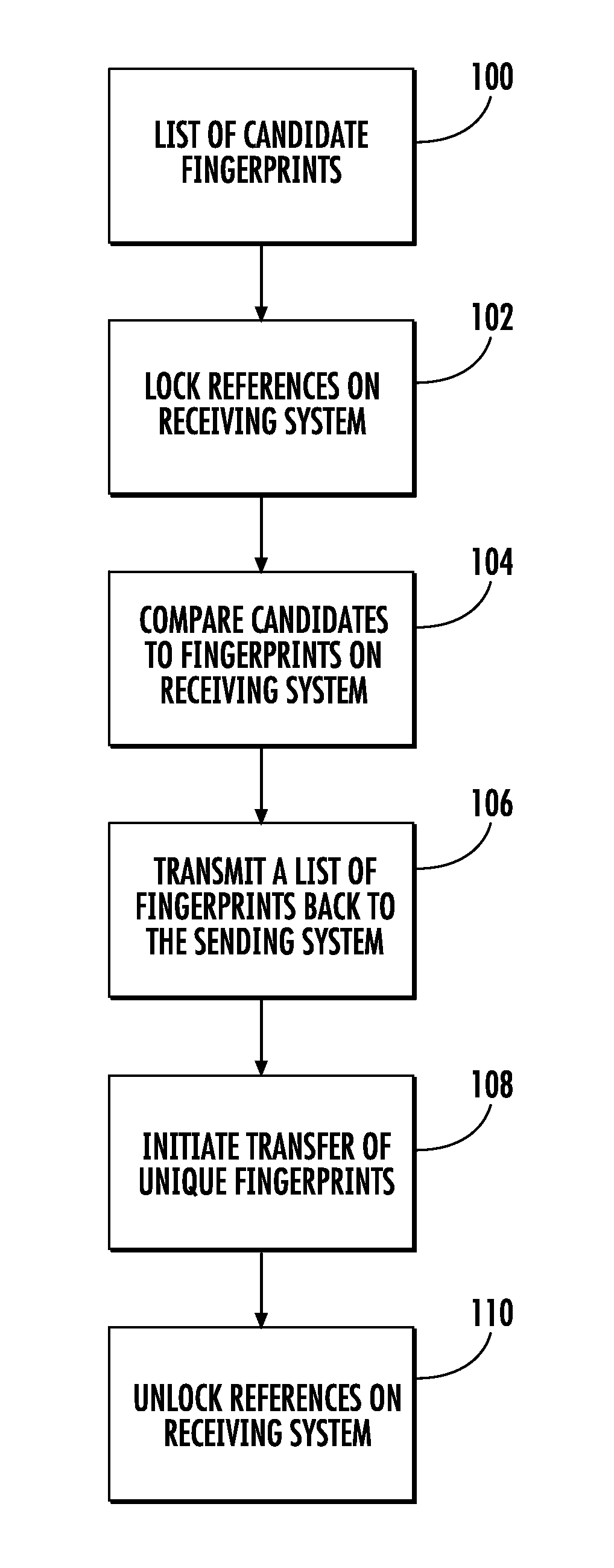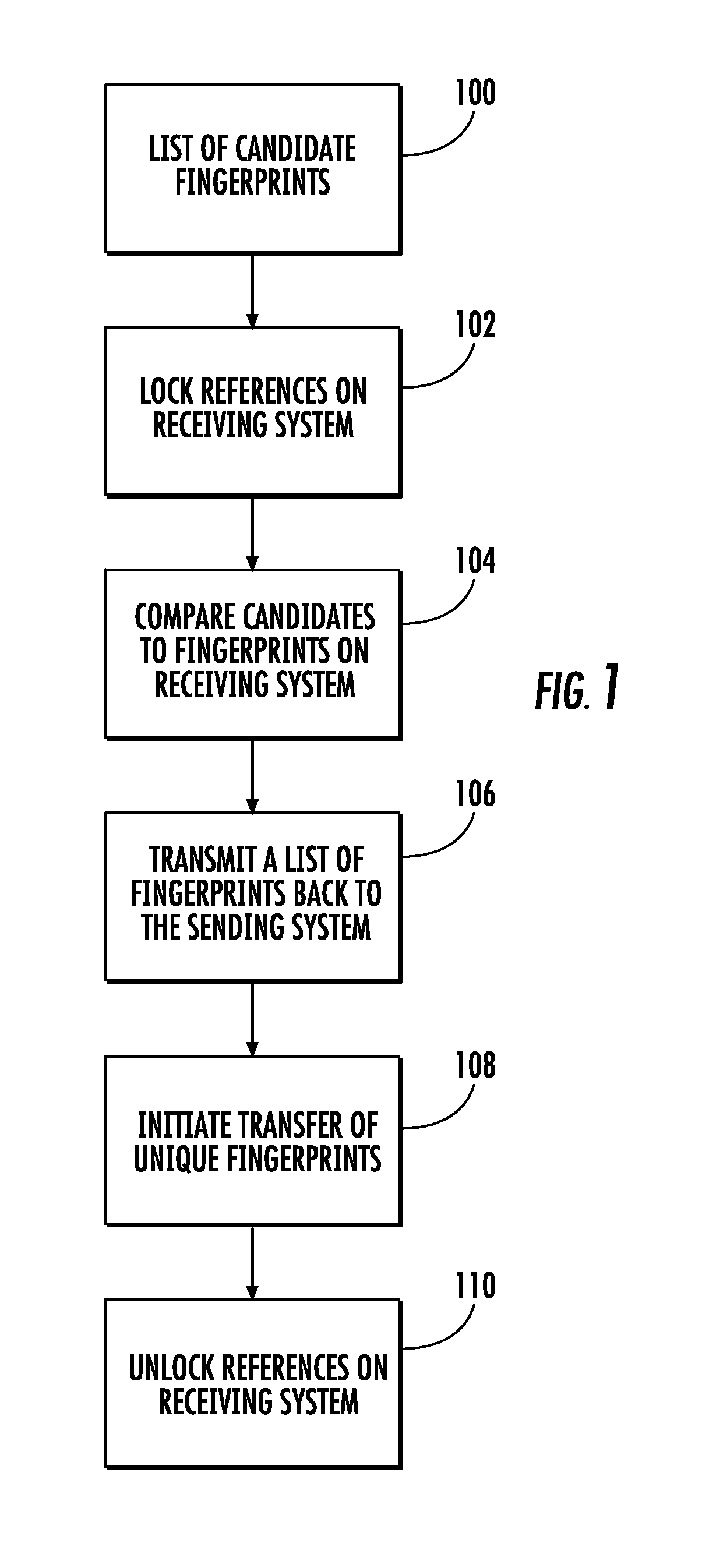Method of minimizing the amount of network bandwidth needed to copy data between data deduplication storage systems
a data deduplication and storage system technology, applied in the field of minimizing the amount of network bandwidth needed to copy data between, can solve the problems of inefficient deduplication techniques and unnecessary data block transfer, and achieve the effects of reducing time and network resources, minimizing the amount of network bandwidth, and efficient copying
- Summary
- Abstract
- Description
- Claims
- Application Information
AI Technical Summary
Benefits of technology
Problems solved by technology
Method used
Image
Examples
Embodiment Construction
[0020]As seen in the attached FIG. 1, details of the preferred embodiment of the method of the present invention are shown.
[0021]In accordance with the present invention, bandwidth is minimized by employing a preamble transfer. This preamble transfer is transfer of information about the data to be transferred from a sender storage location (“sender”) to a receiver storage location (“receiver”) that is executed prior to the primary data transfer.
[0022]In the connection with this, arrays are also employed. Arrays are simple lists of values. In accordance with the present invention, arrays may be used to hold a list of unique fingerprints which represent the data about to be sent to the receiver. One problem with arrays is that the data storage needed for them grows linearly with the number of elements in the list. In this case a list of fingerprints has the appearance of a list of random numbers and is not susceptible to common compression techniques such as run length encoding.
[0023]...
PUM
 Login to View More
Login to View More Abstract
Description
Claims
Application Information
 Login to View More
Login to View More - R&D
- Intellectual Property
- Life Sciences
- Materials
- Tech Scout
- Unparalleled Data Quality
- Higher Quality Content
- 60% Fewer Hallucinations
Browse by: Latest US Patents, China's latest patents, Technical Efficacy Thesaurus, Application Domain, Technology Topic, Popular Technical Reports.
© 2025 PatSnap. All rights reserved.Legal|Privacy policy|Modern Slavery Act Transparency Statement|Sitemap|About US| Contact US: help@patsnap.com


